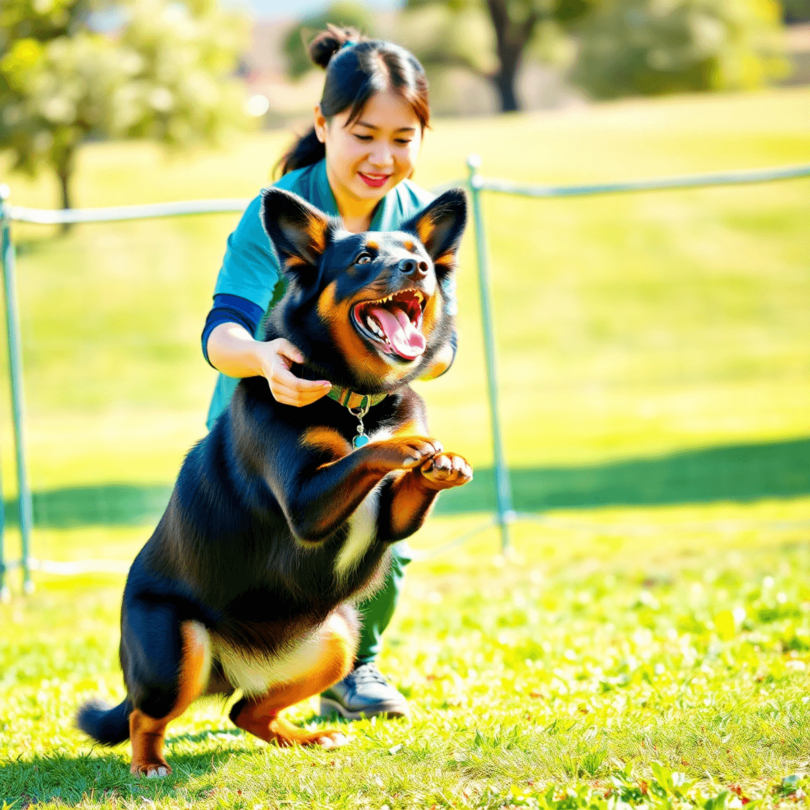Introduction to the Kelpie Training Tips
The Australian Kelpie is a remarkable breed known for its intelligence, agility, and strong work ethic. Originally bred as herding dogs, Kelpies are energetic and thrive on physical activity. Their unique characteristics include:
- Exceptional problem-solving skills
- High energy levels that require ample exercise
- A tendency to exhibit stubbornness, often leading to selective hearing
Structured training is essential for a well-behaved Kelpie. Without proper guidance, their cleverness can turn into mischief. Training not only fosters good behavior but also strengthens the bond between owner and dog.
In this article, you will discover:
- Effective training methods tailored specifically for Kelpies
- Engaging mental stimulation techniques to keep their minds sharp
- Proven socialization strategies that help Kelpies become well-rounded companions
Whether you’re looking to train your working Kelpie or simply want to refine their behavioral training, this guide will equip you with valuable insights and practical tips for a fulfilling training journey. Get ready to unleash the best in your furry friend!

Effective Training Methods for Australian Kelpies
Training your Australian Kelpie can be a delightful adventure filled with laughter, learning, and bonding. The key to successful training lies in understanding their unique characteristics and employing effective methods tailored to their needs.
Importance of Positive Reinforcement
Positive reinforcement is a game-changer in Kelpie training methods. This approach rewards desired behaviors with treats, praise, or playtime, fostering a positive association with learning. Kelpies thrive on this method due to their intelligent nature. When they receive encouragement for good behavior, they are more likely to repeat those actions.
Example: If your Kelpie sits when asked, reward them immediately with a tasty treat or enthusiastic praise. This encourages them to associate sitting with something enjoyable.
Traditional vs. Modern Training Methods
Traditional training methods often emphasize dominance and control, which can backfire with Kelpies due to their cleverness and independence. On the flip side, modern training techniques prioritize understanding and respect between the dog and owner.
Key Differences:
- Traditional: Focus on punishment or corrections.
- Modern: Emphasize positive communication and relationship building.
These modern methods align with the effective communication with dogs that Kelpies respond best to.
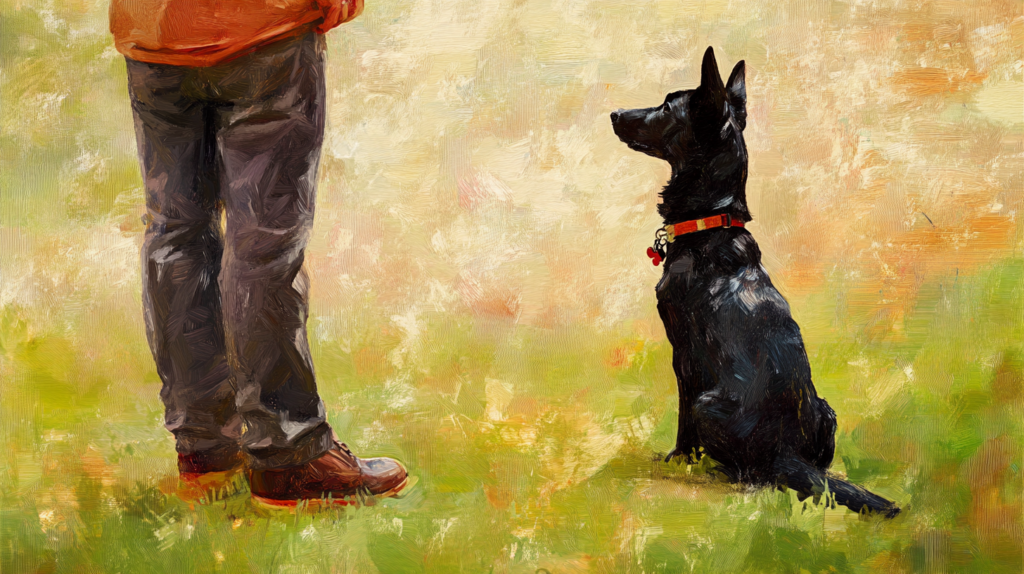
Establishing a Routine and Structure
Creating a daily routine is essential for your Kelpie’s happiness and success in training. A structured environment helps them feel secure while meeting their exercise needs.
Daily Routine Tips:
- Incorporate regular play sessions.
- Schedule consistent meal times.
- Allocate specific times for training exercises.
Creating Physical and Mental Exercise Opportunities
Kelpies require about 1-2 hours of exercise daily to stay healthy and happy. Engaging in various activities keeps them stimulated both mentally and physically.
Recommended Activities:
- Agility Training: Set up an agility course for fun challenges.
- Fetch: A classic game that burns energy while strengthening recall skills.
- Scent Games: Hide treats around the house or yard to encourage natural instincts.
Incorporating a Puppy Training Schedule Effectively
For puppy parents, establishing a Kelpie puppy training schedule is vital. Young Kelpies have boundless energy yet short attention spans. Break training into manageable sessions lasting about 5-10 minutes each.
Puppy Training Schedule Ideas:
- Morning: Short obedience session focusing on sit and stay.
- Afternoon: Playtime incorporating fetch or tug-of-war.
- Evening: Wind down with gentle mental games like puzzle toys.
By integrating these strategies into your training routine, you’ll foster a well-behaved Australian Kelpie eager to learn and explore the world alongside you!

Mental Stimulation Techniques for Australian Kelpies
Australian Kelpies thrive on mental exercise, making it crucial to keep their minds engaged. Without proper stimulation, these intelligent pooches can develop behavioral issues like destructiveness or excessive barking.
Engaging Activities
Here are some fantastic ways to provide mental engagement:
Scent Games: Tap into their natural instincts by hiding treats around the house or yard. Encourage your Kelpie to use its nose to find the goodies. This not only entertains but sharpens their problem-solving skills.
Puzzle Toys: Invest in interactive toys that challenge your Kelpie to think critically. These toys often require them to manipulate pieces to access treats, providing both entertainment and mental workout.
Advanced Tasks
For those Kelpies eager for more complex challenges:
- Search-and-Rescue Exercises: Set up scenarios where your dog must locate lost items or even family members. These activities utilize their herding background and intelligence, offering a fulfilling experience.
Incorporating these techniques into your training routine will not only enhance obedience training but also ensure your Australian Kelpie remains happy and well-adjusted.
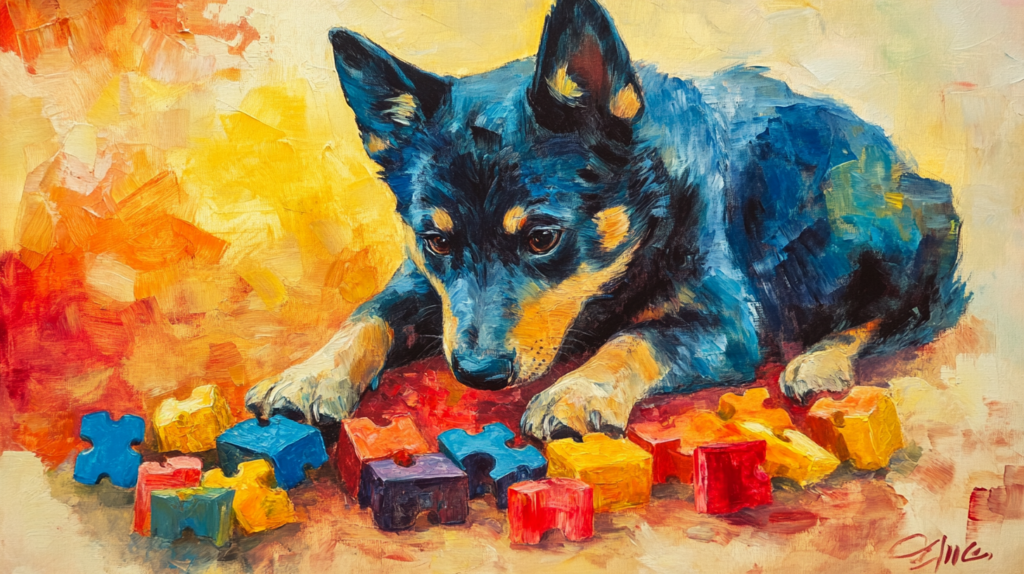
Addressing Common Training Challenges with Kelpies
Training an Australian Kelpie can be as exhilarating as it is challenging. Understanding common obstacles will help you navigate their spirited nature effectively. These intelligent creatures often possess a strong work ethic but can also showcase stubbornness and distractibility. Here are some key challenges you may encounter:
1. High Energy Levels
Kelpies thrive on activity. They require ample physical exercise to prevent pent-up energy from leading to misbehavior. Aim for 1-2 hours of vigorous activity daily, combining walks, playtime, and agility training.
2. Stubbornness
Their intelligence can lead them to think for themselves, sometimes ignoring commands. Patience and consistency in your training approach are essential. Use positive reinforcement techniques that reward desired behaviors instead of resorting to punitive measures.
3. Distractibility
Kelpies have a keen sense of curiosity, making it easy for them to become distracted during training sessions. Incorporate short bursts of focused training mixed with fun activities to keep their attention engaged.
Tailoring your training methods based on your Kelpie’s personality will yield the best results. Understanding their unique quirks allows you to create a more effective and enjoyable training experience for both you and your furry friend.
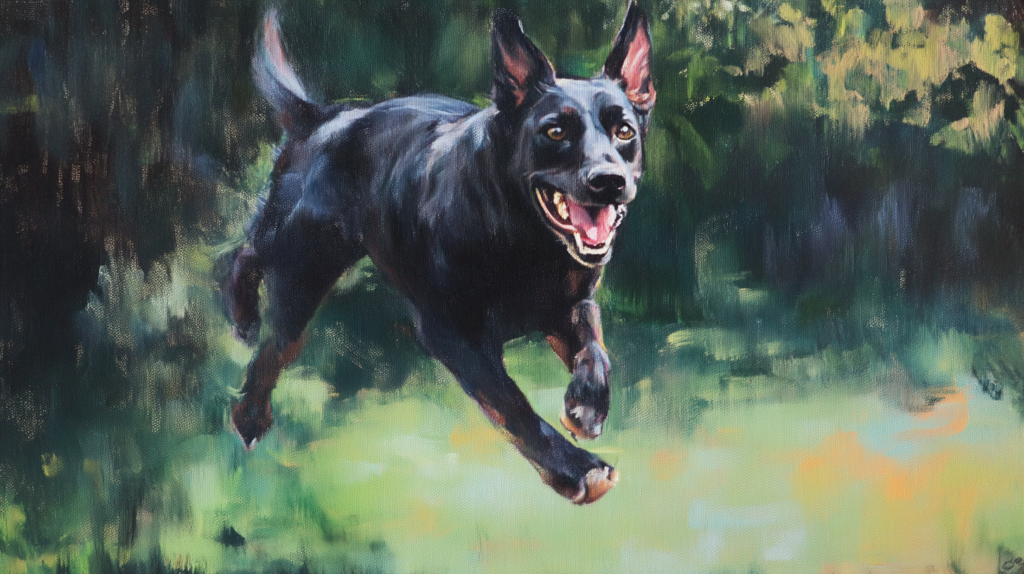
Essential Commands for Obedience Training Your Australian Kelpie
Training your Australian Kelpie in essential obedience commands is a game-changer for both you and your furry friend. These commands not only improve communication but also establish a strong bond built on respect and trust. Here are some key commands every Kelpie should learn for effective obedience:
Key Obedience Commands
- Sit: A foundational command that helps instill self-control.
- Stay: Crucial for keeping your Kelpie in one place, especially in distracting environments.
- Come: Perhaps the most critical for safety, particularly during outdoor adventures.
- Down: Encourages calmness and relaxation, perfect after an energetic play session.
- Leave it: Vital for preventing unwanted scavenging or mischief.
Teaching Techniques
Utilizing positive reinforcement is the way to go when it comes to Kelpie training commands. This method encourages desired behaviors through rewards like treats, praise, or playtime. Here’s how to make it work:
- Start with Short Sessions: Keep training sessions brief (5-10 minutes) to maintain focus and enthusiasm.
- Use Clear Cues: Pair verbal commands with hand signals to reinforce understanding.
- Reward Immediately: Provide immediate rewards when your Kelpie performs the command correctly, reinforcing their success.
- Practice Regularly: Consistency is key; practice commands daily to help solidify learning.
Importance of Consistency
Being consistent in your training approach ensures that your Kelpie understands what is expected of them. Use the same command words and gestures each time while maintaining a positive attitude. Avoid confusing your pup with variations or mixed signals.
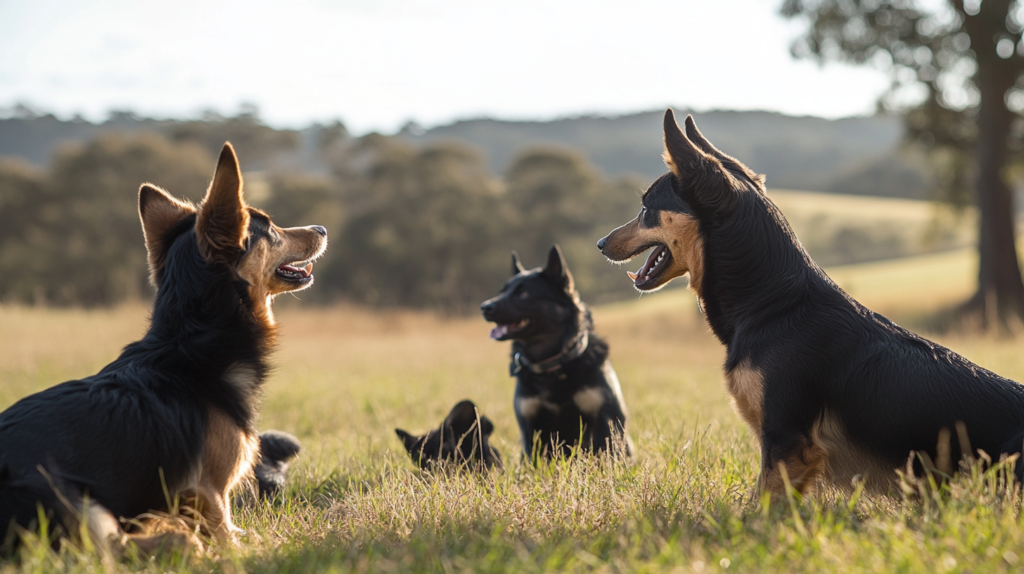
Recall Training for Your Kelpie
Reliable recall is essential for any dog owner, especially in outdoor settings where distractions abound. Training your Australian Kelpie to come when called can save them from danger and enhance your outings together.
Step-by-Step Recall Training Guide
- Choose a Command: Select a simple word or phrase like “Come” that will be used consistently.
- Start Indoors: Begin in a distraction-free environment; call your Kelpie while showing an enticing treat.
- Reward Success: When they come to you, shower them with praise and give them the treat immediately.
- Gradually Increase Distance: Once they understand indoors, move outside and gradually call them from farther away.
- Add Distractions Slowly: Introduce distractions gradually while practicing recall to improve their responsiveness.
Tips for Recall Success
- Practice in different environments to build reliability in various situations.
- Never punish your dog for coming late; this can make them hesitant to respond next time.
- Always reward even partial successes initially, then gradually expect more as they improve.
It’s also crucial to prepare your Kelpie for unexpected situations by teaching them an emergency recall command. This could be lifesaving in scenarios where they might wander off or get into trouble. For further guidance on implementing such strategies, consider exploring resources like this comprehensive guide on emergency recall training.
By focusing on these essential commands and employing effective training techniques, you’ll cultivate a well-behaved Australian Kelpie ready for any adventure!
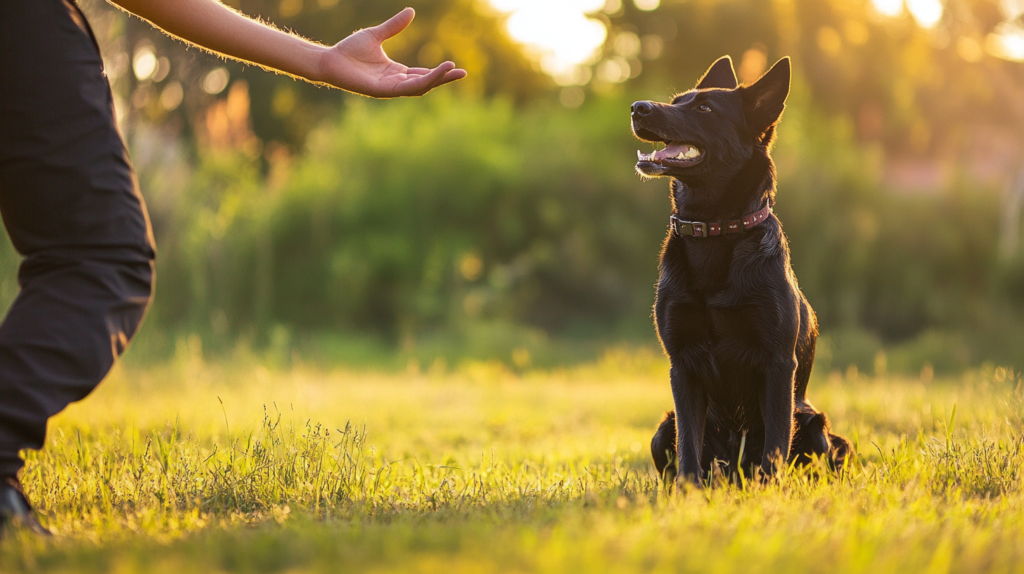
Dealing with Behavioral Issues in Kelpies
Australian Kelpies are smart and full of energy, but they can sometimes show certain behavioral problems that need to be fixed. Here are some common issues and how to solve them:
1. Barking
This breed loves to communicate. If excessive barking becomes an issue, redirect their energy into training sessions that focus on commands like “quiet” or “enough.” Reward moments of silence.
2. Chewing
Puppies explore the world through their mouths. To tackle this, provide appropriate chew toys and redirect their attention when they start chewing on furniture or shoes.
3. Biting
Understanding how to stop Kelpie puppy biting is crucial. Use positive reinforcement by providing a toy when they start nipping. When they bite too hard, yelp to mimic a puppy’s response, teaching bite inhibition.
4. Destructive Behavior
Boredom can lead to destructive tendencies. Engage them in daily mental stimulation activities such as puzzle toys or scent games.
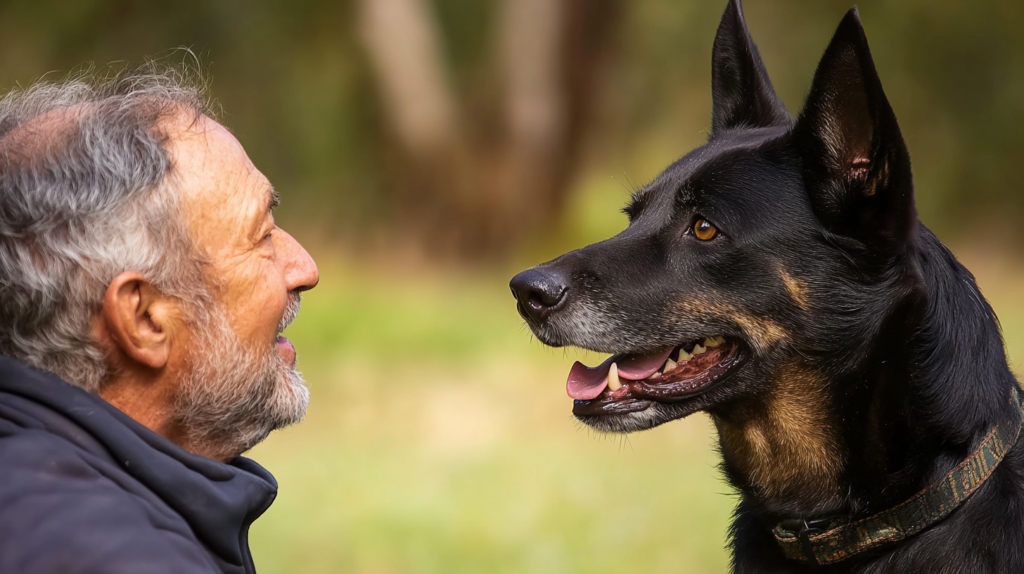
Understanding Dog Body Language
Knowing how dogs communicate through their bodies is important in stopping these problems before they start:
- Look out for signs of stress, anxiety, or excitement.
- Pay attention to cues like raised hackles or stiff tails.
- React appropriately to create a calm environment.
By dealing with these behavioral problems early on, you’ll have a well-behaved friend as you train your Australian Kelpie!
Ending Training Sessions Positively With Your Australian Kelpie
Training your Australian Kelpie can be an exciting journey, and it’s crucial to end sessions on a high note. This practice not only reinforces learning but also maintains motivation in dogs.
Best Methods for Ending Sessions Positively
- Wrap Up with Praise: Always finish with a round of enthusiastic praise. Use a cheerful tone and lots of affection. Your Kelpie thrives on positive reinforcement.
- Short Playtime: Following up training with a fun game, like fetch or tug-of-war, is a great way to reward their hard work. Just ensure that the playtime is truly enjoyable and not mistaken for aggression by observing their behavior closely. This article provides insights into distinguishing between play and fight behavior in dogs.
- Treats Galore: A small treat can be the cherry on top! Rewarding your Kelpie for good behavior right before ending reinforces their positive actions.
Building Enthusiasm for Future Learning Experiences
Creating anticipation for future training is essential. Try these tips:
- Vary Your Routine: Keep things fresh by mixing up exercises and introducing new commands or tricks. Kelpies love challenges!
- Leave Them Wanting More: End sessions while your dog is still eager and engaged. This approach fosters excitement and curiosity about what’s next.
Implementing these strategies ensures that your training sessions are not just productive but also fun for both you and your furry friend!
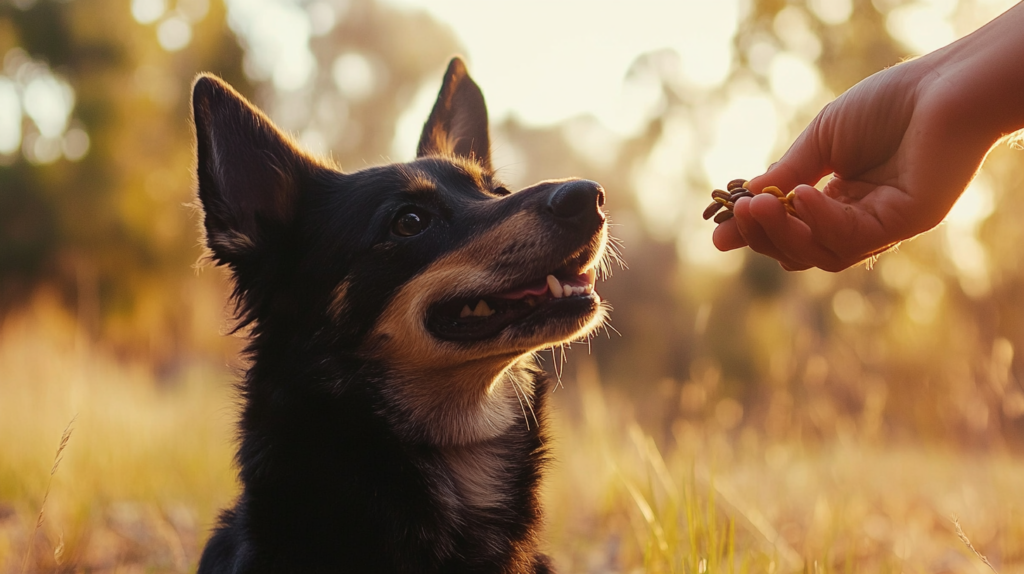
Conclusion
Training your Australian Kelpie can be an incredibly rewarding journey. With a bit of patience and consistency, you can cultivate a happy and healthy Kelpie that thrives in any environment. Here are some key takeaways to keep in mind:
- Stay Consistent: Regular training sessions reinforce learning and help your Kelpie understand expectations.
- Embrace Patience: Progress may come in fits and starts. Celebrate small victories along the way.
- Focus on Bonding: Building a strong relationship with your pup enhances their willingness to learn.
By applying the tips from this comprehensive training guide for Kelpies, you’ll nurture not just a well-behaved companion but also a devoted working dog. Remember, each Kelpie is unique—tailor your approach to suit their personality and watch them flourish!
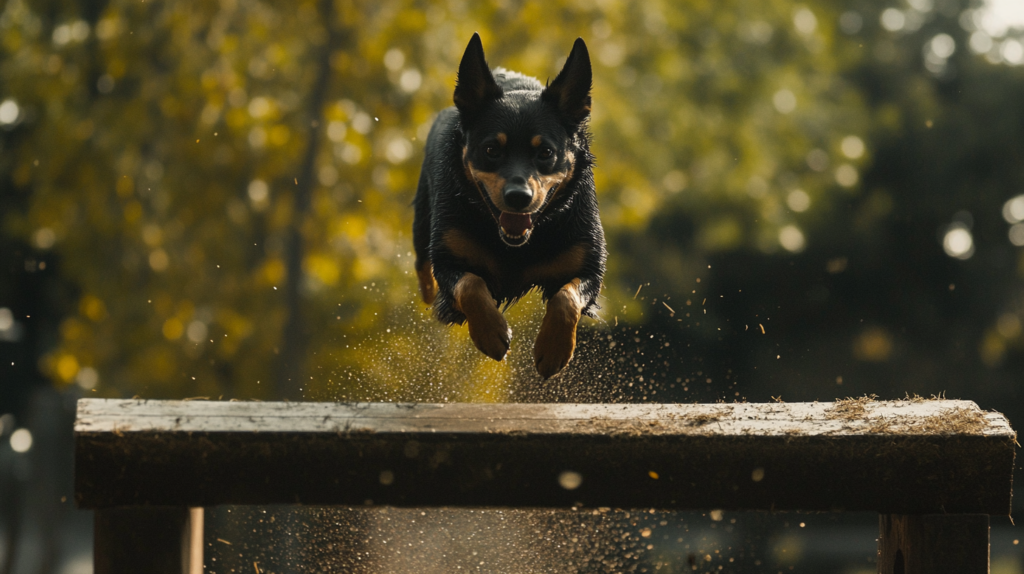
FAQs (Frequently Asked Questions)
What are the unique characteristics of the Australian Kelpie?
The Australian Kelpie is known for its intelligence, high energy levels, and strong herding instincts. They are highly trainable and require structured training to channel their energy effectively.
Why is positive reinforcement important in training Kelpies?
Positive reinforcement is crucial in training Kelpies as it encourages desired behaviors through rewards. This method fosters a strong bond between the dog and owner while making learning more enjoyable for the Kelpie.
How can I effectively socialize my Kelpie?
Effective socialization involves exposing your Kelpie to various environments, people, and situations from an early age. This helps develop well-rounded behavior and can prevent potential aggression or behavioral issues later on.
What common behavioral problems do Kelpies face?
Common behavioral problems in Kelpies include excessive barking, biting during puppyhood, and high energy levels leading to distractibility. Understanding dog body language and employing proper training techniques can help manage these issues.
What essential commands should I teach my Kelpie?
Key commands for Kelpies include sit, stay, come (recall), and leave it. Using positive reinforcement consistently while training these commands will ensure effective obedience and enhance communication between you and your dog.
How should I end training sessions with my Kelpie?
Ending training sessions positively is vital for maintaining motivation. Reinforce good behavior just before concluding the session, ensuring that your Kelpie associates training with positive experiences, which will encourage enthusiasm for future learning.
